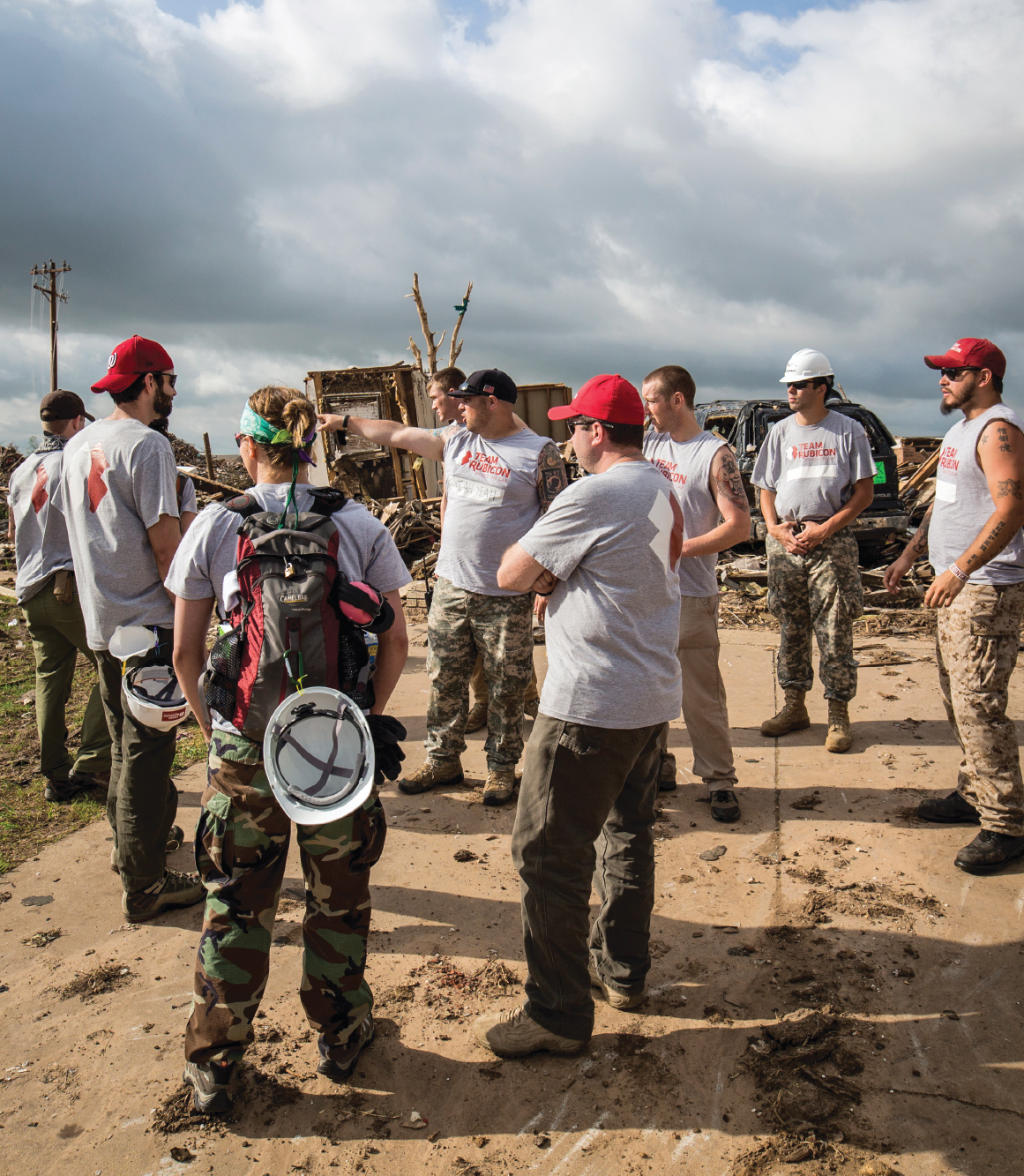9
Communicating in Groups

Team Rubicon, a group composed mainly of military veterans, uses skills from deployment to provide disaster relief. Photo courtesy of Kirk Jackson, Team Rubicon
After you have finished reading this chapter, you will be able to
- List the characteristics and types of groups and explain how groups develop
- Describe ways in which group size, social relationships, and communication networks affect group communication
- Define the roles individuals play in a group
- Explain how a group’s cohesion, norms, and individual differences affect group processes and outcomes
When a 7.0-magnitude earthquake devastated Haiti on January 10, 2010, Jacob Wood and William McNulty didn’t just watch television in horror. They didn’t just say a prayer or make donations to the Red Cross. Instead, they made some phone calls and a couple of Facebook posts, and within three days, they and a small team of fellow veterans were on the ground in Port-au-Prince. As Marine Corp veterans who had served in both Iraq and Afghanistan and who had volunteered in New Orleans after Hurricane Katrina, it was clear to Wood and McNulty that disasters and war zones had a lot in common: limited resources, collapsed infrastructure, a lack of information or communication, populations in chaos, and horrific sights and situations that can grind even the most earnest volunteer to a halt. It was also clear that the skills they honed during their deployments—medical triage, decisive leadership, the ability to quickly assess and respond to a situation, and focus intently on the task at hand—were invaluable, especially during the first few days after a disaster. The group refers to its role as “bridging the gap” between disasters and the arrival of conventional aid (Team Rubicon, 2014).
In the years since, Team Rubicon, the veteran’s service/disaster response organization founded by Wood and McNulty, has provided intense, immediate relief in the aftermaths of floods, earthquakes, hurricanes, tornadoes, and other disasters around the world and around the United States. The organization consists of more than fourteen thousand members, most of them military veterans, who mobilize quickly and deploy to disaster-stricken areas and regions on a moment’s notice (Team Rubicon, 2014). But in the process of providing relief, Wood and McNulty found yet another gap they needed to bridge. Returning veterans often find it difficult to adjust to civilian life, a reality that was brought into sharp relief when close friend and founding member of Team Rubicon, Clay Hunt, took his own life in March 2012. Once again proving that adaptability and focus are crucial to “bridging the gap,” Team Rubicon adjusted its mission to include veteran’s services, including suicide prevention, career training, and leadership opportunities.
When three or more people come together, their interactions and relationships—and their communication—take on new characteristics. As you can see in our discussion of Team Rubicon, groups can have a tremendous impact, both on individual members and on those with whom the groups interact. In this chapter, we’ll learn more about group communication, how groups operate, and the factors that influence their communication.
